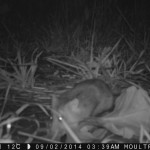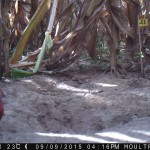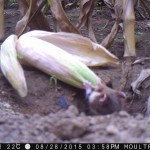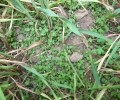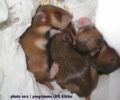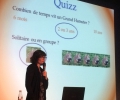Increased activity before hibernation
7 décembre 2015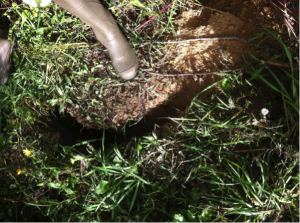 The passageway dug in front of the entry to the European Hamster’s burrow shows how heavy its activity actually is. The animal is stocking up on its last reserves before the hibernation period.
The passageway dug in front of the entry to the European Hamster’s burrow shows how heavy its activity actually is. The animal is stocking up on its last reserves before the hibernation period.
What factors trigger hibernation?
Many experts feel that an outside temperature below 10°C triggers the beginning of hibernation. Nonetheless, studies carried out in captivity with a constant temperature show that the trigger factor is actually the decrease in the day-length period, which is how long the sun shines.
This, as winter draws closer, the European Hamster changes the way its burrow is organised to dig out new chambers and store the resources it will require for the upcoming six months of hibernation. Other hibernating animals, such as the groundhog, store fat, but the hamster stores food, that it will eat during its hibernation period. It blocks the outer opening using plants and soil to insulate its burrow from the cold.
Older males are the first to begin hibernation, followed by younger males and then females. This timing seems to be linked to the capacity to accumulate food reserves.
What does the European Hamster do during hibernation?
Hibernation is characterized by periods of hypothermia: the animal’s body temperature falls to stabilise at 1°C above outside temperatures. These periods of lethargy/torpidity are interrupted by stages called euthermia (or more commonly known as “waking up,”) where body temperature rises again. During these periods when it is awake, the European Hamster eats the food it has stored, drinks, defecates and sleeps (yes, sleeps, as sleep and hypothermia are two very different physiological phenomenon!).
The hamster’s nutritional needs are very specific, and change over the seasons. From October to April, when it is stocking up on reserves and hibernating, it has specific needs for food that is high in polyunsaturated fatty acids (omega 6) and low in proteins. Poor feeding can negatively impact the depth and duration of hypothermia.
During the hibernation period, European Hamster follow-up is put on hold, which allows ONCFS agents to study data taken during the animals’ active periods. More to come next April!

